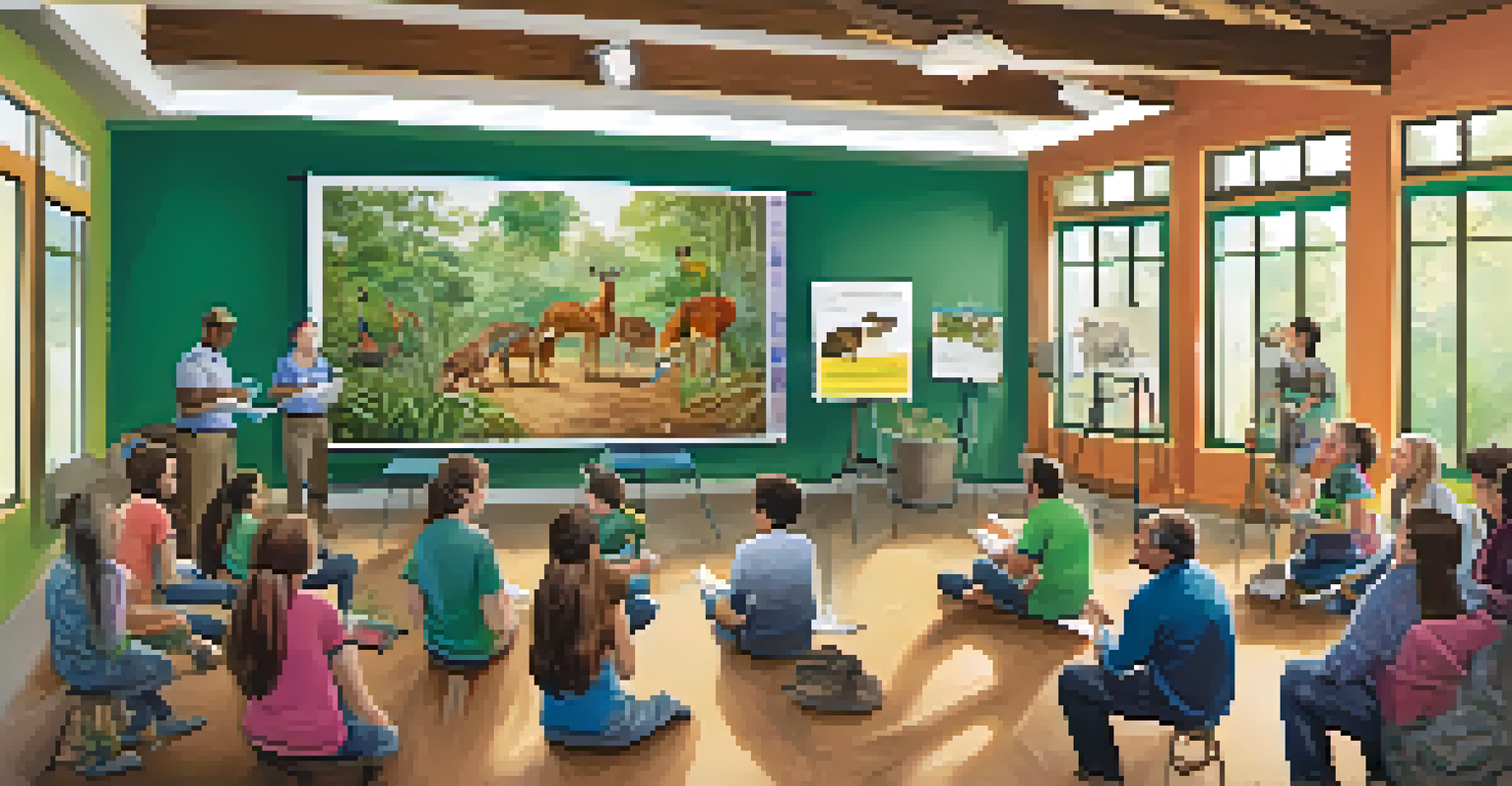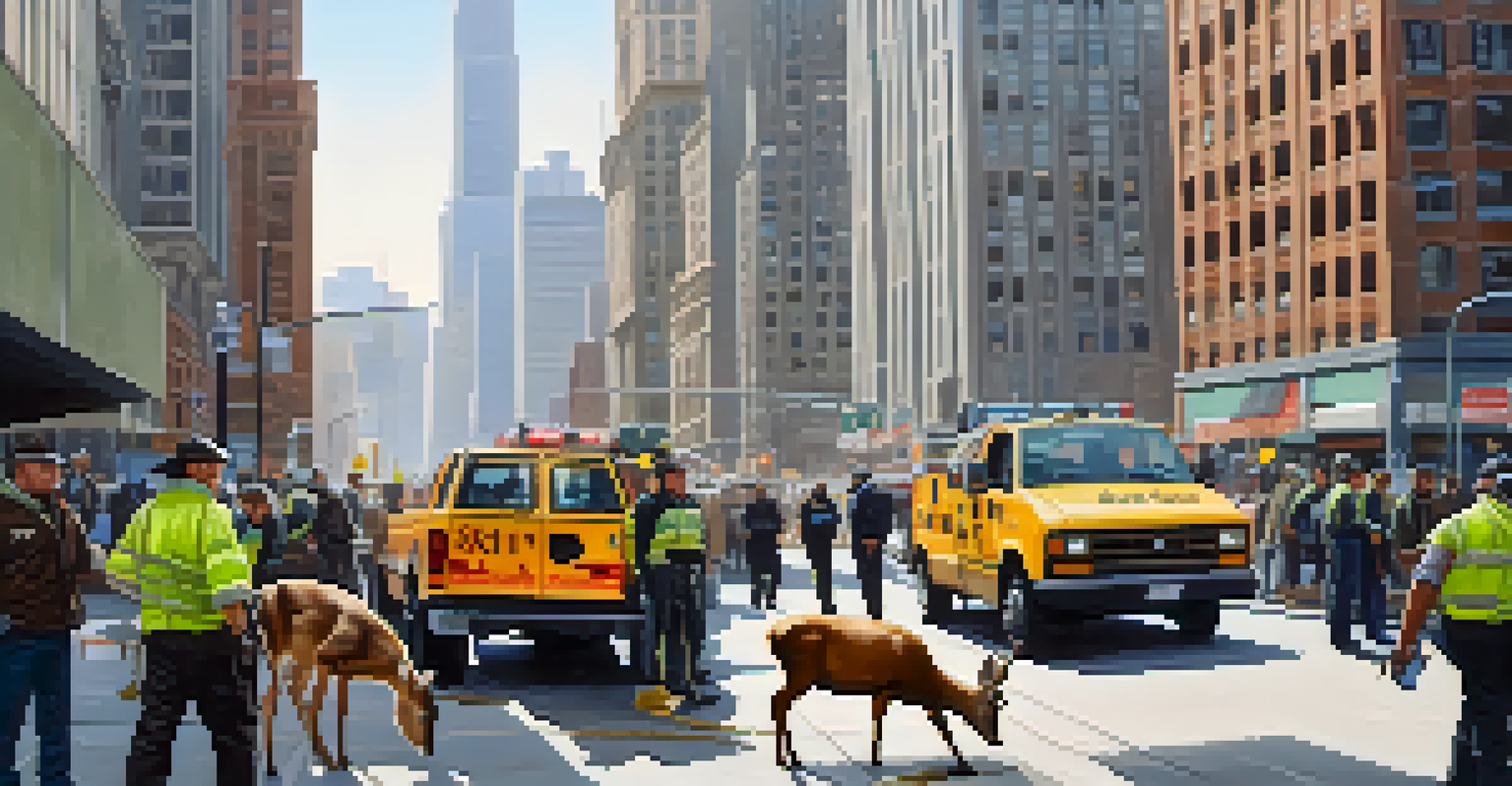Challenges Faced by Wildlife Rehabilitation Centers in India

Limited Funding and Resources for Rehabilitation Efforts
Wildlife rehabilitation centers in India often operate on tight budgets, limiting their ability to provide adequate care. Many rely on donations and grants, which can be inconsistent and insufficient. This funding shortage affects everything from medical supplies to staff salaries, making it challenging to maintain high standards of care for injured animals.
The greatness of a nation and its moral progress can be judged by the way its animals are treated.
Moreover, the lack of financial resources can hinder the centers' ability to expand their facilities or invest in necessary training for staff. Without proper training, caregivers may struggle to meet the diverse needs of the wildlife they treat. This situation creates a cycle where inadequate funding leads to subpar care, which in turn affects the overall success of rehabilitation efforts.
As a result, many centers are forced to make tough decisions about which animals to prioritize. This reality is heartbreaking for dedicated staff who want to help every creature that comes through their doors, illustrating the critical need for more sustainable funding solutions.
Legal and Bureaucratic Hurdles in Animal Rescue
Navigating the legal landscape can be a significant hurdle for wildlife rehabilitation centers in India. Strict regulations around animal rescue and rehabilitation often create confusion among staff and volunteers. This complexity can delay urgent responses when animals need immediate care, ultimately putting their lives at risk.

Additionally, the bureaucratic processes involved in obtaining the necessary permits can be time-consuming and frustrating. Many centers find themselves stuck in red tape, unable to act swiftly when they encounter injured or orphaned wildlife. This not only affects the animals but also demoralizes the staff who are passionate about their work.
Funding Shortages Affect Care Quality
Wildlife rehabilitation centers in India struggle with limited funding, hindering their ability to provide adequate care for injured animals.
The need for a more streamlined and supportive legal framework is clear. By simplifying regulations and offering guidance, authorities can empower rehabilitation centers to respond more effectively and efficiently to wildlife emergencies.
Public Awareness and Education Challenges
One of the significant challenges wildlife rehabilitation centers face is the lack of public awareness about their work. Many people are unaware of the importance of these centers in conserving wildlife and maintaining ecosystem balance. This gap in knowledge can lead to misunderstandings about the need for professional help when encountering injured animals.
Wildlife is a vital part of our ecosystem, and when we lose it, we lose a part of ourselves.
Moreover, misconceptions about wildlife care can result in well-meaning individuals attempting to intervene themselves, which can do more harm than good. For example, attempting to care for a baby bird without understanding its specific needs can lead to its demise. This highlights the need for educational programs that inform the public about how to interact responsibly with wildlife.
By increasing awareness and providing clear guidelines for animal rescue, wildlife rehabilitation centers can foster a more supportive community. Engaging the public through workshops, social media, and outreach initiatives can help bridge this gap and encourage people to seek professional assistance.
Challenges of Species Diversity in Rehabilitation
India is home to a vast array of wildlife species, each with unique care requirements. This diversity presents a challenge for rehabilitation centers, which may not always have the expertise or resources needed to cater to every species. From birds to mammals and reptiles, each category requires specialized knowledge for effective rehabilitation.
For instance, the dietary needs of a carnivorous animal differ vastly from those of a herbivore, and meeting these needs is crucial for recovery. Centers often have to rely on a small group of specialists, which can create a bottleneck in care, particularly during peak rescue seasons. This challenge underscores the importance of ongoing training and collaboration among wildlife rehabilitators.
Legal Hurdles Delay Animal Rescue
Complex legal regulations and bureaucratic red tape often prevent swift action in wildlife rescue, risking the lives of injured animals.
To address this challenge, centers must prioritize knowledge-sharing and capacity-building initiatives. Partnering with experts and universities can enhance the skills of staff members, ensuring that all species receive the best possible care during their rehabilitation journeys.
The Impact of Urbanization on Wildlife Rescue Efforts
Urbanization poses a significant threat to wildlife, making it an increasing challenge for rehabilitation centers. As cities expand, natural habitats shrink, leading to more frequent human-wildlife conflicts. This often results in more animals being injured or displaced, overwhelming the resources of rehabilitation centers.
As animals venture into urban areas in search of food or shelter, they face dangers such as traffic, pollution, and habitat destruction. These factors not only contribute to rising injury rates but also complicate the centers' mission to rehabilitate and release animals back into their natural habitats. The pressure on facilities increases, often leading to overcrowding.
Addressing this challenge requires a multi-faceted approach, including better urban planning that considers wildlife corridors. Additionally, raising public awareness about coexisting with wildlife can help reduce conflicts and minimize injuries, allowing rehabilitation centers to focus on recovery rather than crisis management.
Veterinary Care Limitations in Wildlife Rehabilitation
Veterinary care is a cornerstone of successful wildlife rehabilitation, yet many centers face significant limitations in this area. Access to wildlife veterinarians is often scarce, especially in rural regions where many centers operate. This shortage can delay critical medical treatment for injured animals, hindering their chances of recovery.
Furthermore, veterinarians specializing in wildlife care may be overburdened, limiting the number of cases they can handle at any given time. This reality can lead to difficult decisions about which animals receive care first, creating ethical dilemmas for staff. The lack of specialized veterinary care can ultimately compromise the rehabilitation process.
Public Awareness is Lacking
A general lack of public knowledge about wildlife rehabilitation leads to misunderstandings and improper interventions, underscoring the need for education.
To overcome these limitations, collaboration with veterinary colleges and training programs for local vets can be beneficial. By investing in education and creating a network of wildlife health professionals, rehabilitation centers can ensure that every animal receives the essential care it needs.
The Role of Volunteers in Wildlife Rehabilitation Efforts
Volunteers play a vital role in the functioning of wildlife rehabilitation centers, yet managing them can present unique challenges. Many centers depend on volunteer support for tasks such as feeding, cleaning, and general care, but not all volunteers have the necessary skills or experience. This can lead to inconsistent care, which is detrimental to the animals' recovery.
Additionally, the emotional toll of working with injured wildlife can be overwhelming for volunteers, especially those who are new to the field. They may face difficult situations, such as euthanizing an animal that cannot be saved, which can lead to burnout and high turnover rates. This fluctuation in volunteer support can disrupt the continuity of care needed for rehabilitation.

To enhance the effectiveness of volunteer programs, centers should implement structured training programs and provide ongoing support. By fostering a strong sense of community and equipping volunteers with the skills needed, centers can create a more stable and effective team dedicated to wildlife rehabilitation.